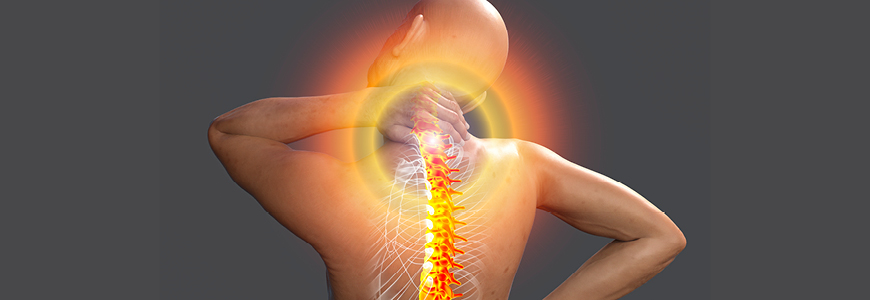As part of ongoing efforts to decrease the use of opioids and other narcotics to manage chronic neuropathic pain, Duke now offers three different minimally invasive peripheral nerve stimulation (PNS) devices that can treat the root of a patient’s pain without the risk of abuse or dependence.
PNS, a type of neuromodulation, involves implanting an ultrathin electrode or lead next to the target nerve, which delivers mild electrical currents that can then change how rapidly the selected peripheral nerve transmits pain signals to the brain. The device also includes a removable, wearable transmitter and battery as well as a handheld remote that enables patients to customize their device’s settings and manage their pain.
Aashish Jay Kumar, MD pain medicine and interventional spine specialist, explains that this therapy is ideal for patients with chronic pain that is isolated and has an identifiable peripheral nerve target, and has applications to many different locations on the body.
“As long as there is an identifiable nerve target and the patient’s pain does not radiate to other areas of the body, I can use PNS as an effective modality of therapy to reset the nerves that are creating the chronic pain,” he says. “We use anatomical placement of the device along with patient feedback to help with the accuracy of the therapy and therefore its effectiveness.”
Kumar performs PNS most commonly for patients with shoulder pain or a rotator cuff injury, but PNS is also ideal for patients with axial low back pain, shoulder, hip or knee joint pain, fibromyalgia, diabetic peripheral neuropathy, chronic regional pain syndrome, meralgia paresthetica, and refractory headaches.
Below, Kumar provides key takeaways for the different types of programmable PNS devices he uses to provide chronic pain relief for patients at Duke.
SPRINT PNS System (SPR Therapeutics, Cleveland, OH)
- Placement: Outpatient procedure; temporary implantation (60 days); removable transmitter and battery are worn on the skin and are attached to end of lead
- Limitations: Cannot be submerged in water (i.e., swimming, taking a bath)
- Most common application: Axial low back pain; promises pain relief for up to two years
StimRouter Neuromodulation System (Bioness, Valencia, CA)
- Placement: Outpatient procedure; transmitter attaches to disposable user patch
- Limitations: Permanent implantation
- Most common application: Chronic knee pain for patients who have already had a knee replacement
StimQ PNS System (Stimwave, Pompano Beach, FL)
- Placement: OR procedure, temporary implantation, transmitter and battery must be clipped to clothing or worn with Velcro
- Limitations: Requires a seven-day trial period before the device is turned on; requires patient to return to clinic for device programming
- Most common application: Chronic headaches
Kumar notes that while this non-narcotic pain relief therapy has been gaining momentum, there is still more work to do to ensure that it becomes more widely approved by private insurance companies so that patients will have better access to it.
“I believe that the more therapy options we have for patients that suffer from chronic pain, the less those patients will seek to rely on addictive opioid medications,” he says.
